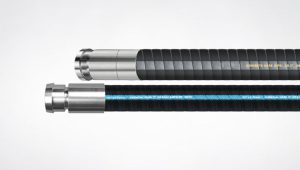Rubber hose is found in many different environments and has a wide variety of uses. They come in different specifications for temperature and fluid, and pressure changes.
Hose pipes are a staple in most vehicles and homes. They are found in all sorts of industries, as well.
Different hoses require different types of rubber, so understanding your use case is key for efficiency and longevity.
Natural Rubber
Natural rubber is the basis for many different types of hose. This material is produced from the latex of a tropical plant called the para rubber tree and it can be manufactured in a variety of ways including extrusion, spiral wrapping and calendaring.
This material has good abrasion resistance and low temperature capabilities. It is also able to seat into gaps and imperfections well. However, it doesn’t have much oil resistance or handle heat very well which makes other elastomer materials better choices.
Styrene-Butadiene Rubber (SBR) is a common alternative to natural rubber. This material offers similar physical properties to NR, including low compression set and resilience, but it is less expensive. It also adds moderate oil resistance and handles heat and ozone very well. This makes it ideal for applications requiring both an air and oil resistant hose. Neoprene (chloroprene) is another general synthetic rubber that has good ozone and weathering abilities. This material is often used for gaskets and matting that may come into contact with oil but not a lot of it.

Synthetic Rubber
Synthetic rubbers are derived from petroleum-based olefinic compounds and can be cured through polymerization or sulfonation. They are more durable than natural rubber and are able to handle higher temperatures and pressures. These properties make them ideal for a variety of industrial applications.
Neoprene is a popular synthetic rubber that provides good oil and chemical resistance. It is also resistant to heat and aging. Nitrile butadiene rubber, commonly known as Buna-N, is another type of synthetic rubber that can be used in hoses. It has excellent low-temperature and oil resistance and is a good choice for hoses that will be exposed to frequent contact with oils or fuels.
In addition to these common types of synthetic rubber, specialized rubbers can be used in hoses for unique applications. These include food-grade hoses, military-spec hoses and hydraulic hoses. The most common use of rubber hose is for conveying fluid power in the manufacturing industry and motor vehicles.
Polyurethane
Polyurethanes are produced by the chemical reaction of diisocyanates (organic compounds with two functional groups of structure — NCO) with glycols. They can be made into flexible foams for upholstery and mattresses or rigid foams used in lightweight structural elements like the core of an airplane wing. They can be sprayed as a coating or in an injection molded shape.
Unlike rubber, urethane is much less prone to kinking. It also doesn’t retain a “kink memory” as many traditional garden hoses do. This allows the hose to “flip” out of a kink rather than collapse down into it.
This allows a higher pressure and vacuum rating and better flow of liquids and gases. It’s also resistant to most gasolines, oils and kerosene, making it perfect for use with fuel lines. Our urethane hoses, manufactured by Eley, feature brass fittings that are lead-free and crush-proof. This makes them safer to handle for people who work with chemicals and liquids every day.
Polyisoprene
Polyisoprene is a synthetic cis-1,4-polyisoprene and can be made via industrial polymerization. It can be cured with sulfur and is soluble in aliphatic and aromatic solvents such as acetone and diethyl ether. It has low boiling and freezing points and burns with a dark, sooty flame that smells like rubber.
It is used in hoses to circulate and transport liquids and gases for household and industrial use. It is also used to make medical devices and tubing. It is resistant to abrasion, inorganic chemicals, weathering and low-temperature environments.
The global market for polyisoprene is driven by rising automobile production and demand. However, unstable raw material prices will hamper market growth. The report provides a detailed overview of the global market including market trends, estimates, and forecasts. This will help market players to understand the opportunities and devise appropriate strategies to tap them. It covers major markets in North America, Europe, Asia and Latin America. It also offers a comparative analysis of the market for polyisoprene across various regions.